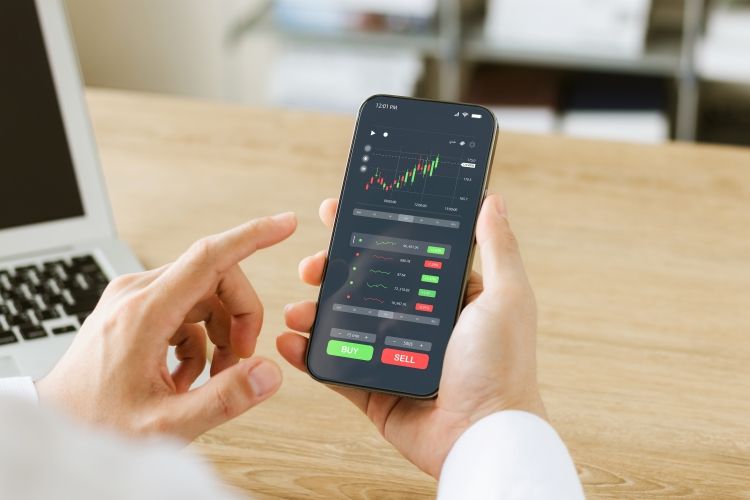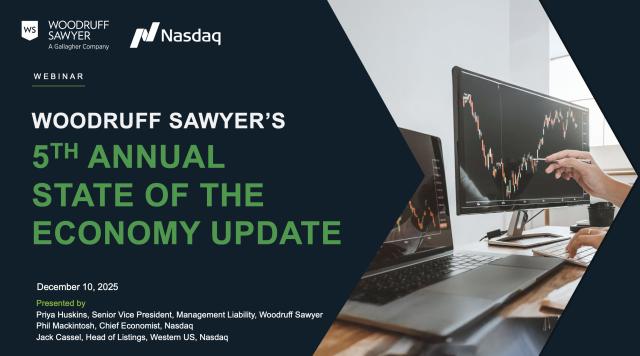Blog
Looks Bad, Might Be a Coincidence? Insider Stock Sales, 10b5-1 Trading Plans, and the SEC’s New Rules
Did senior executives at Silicon Valley Bank sell shares while in possession of material nonpublic information shortly before the demise of the company? If they did, they violated the federal laws against insider trading.
But while the press and others were quick to rush to judgment, a quick search of the Securities and Exchange Commission (SEC) filings potentially tells a very different story, one of compliance with the then-current rules when it comes to 10b5-1 trading plans. More about this later in this article.

A good 10b5-1 trading plan provides an affirmative defense against illegal insider trading. For a well-intentioned director or officer, having such a plan can mean the difference between avoiding years of painful insider trading litigation or not.
The SEC recently updated the rules on 10b5-1 trading plans so there are fewer opportunities to engage in activity that could be considered insider trading.
In this article, we’ll look at the purpose of 10b5-1 trading plans and the highlights of the SEC’s new rules. Then, I’ll briefly discuss the controversy over executives at Silicon Valley Bank selling stock ahead of its demise.
The Purpose of 10b5-1 Trading Plans
Insiders of publicly traded companies have long relied on 10b5-1 plans to sell their stock at predetermined times using formulas that set the amount, price, and date.
Available since 2000, these plans are designed to provide a safe harbor against accusations of illegal insider trading.
Should we care if insiders have a safe way to sell shares? Yes.
Equity compensation for directors and officers is designed to align their incentives with those of the shareholders they serve—but it is meaningless if they can never safely turn it into cash.
Risk is part of business, and the pace of business today is either fast or faster. This leaves executives vulnerable to charges of insider trading if they happen to sell shares prior to unexpected events that cause their stock price to decline.
When directors, officers, and other insiders sell stock in a predetermined, formulaic way after a cooling-off period, it is less likely that these insiders profited from trading while in possession of material nonpublic information.
And any system set up by humans is subject to potential corruption. Indeed, the SEC has been scrutinizing 10b5-1 plans for quite some time.
This culminated in 2021 when SEC Chair Gary Gensler said there were “real cracks in our insider trading regime,” and “freshening up” Rule 10b5-1 would address these issues.
In December 2022, the SEC updated its rules on 10b5-1 trading plans. Below are the key highlights that directors, officers, and the companies they serve need to know in order to properly use 10b5-1 trading plans.
Of course, general counsel and compliance officers will want to review the full text of the final rule.
Note that the new rules do not address Rule 10b5-1 plans for the repurchase of shares by issuers. While the SEC had proposed new rules for these as well, those rules have not yet been finalized.
New Rule: Cooling-Off Period
Some—but not all—companies already have a waiting period between when the 10b5-1 plan is adopted and the first trade. This is referred to as the “cooling off” period.
The old SEC rules, however, did not require a cooling-off period. Theoretically, someone could have adopted the 10b5-1 plan and traded that same day—and people have.
The final rule points to academic research that shows this type of scenario was happening, and that it was “abnormally profitable” for insiders.
This sort of thing defeats the point of the plan, which is, in part, to demonstrate that the insider did not have material nonpublic information at the time of the trade.
The new rules require a cooling-off period. For directors and officers, trading under the plan may not begin until the later of:
- Ninety days after the adoption of the Rule 10b5-1 plan (or any modification of a plan), or
- Two business days following the disclosure of the issuer’s financial results in a Form 10-Q or Form 10-K for the fiscal quarter in which the plan was adopted (for foreign private issuers, in a Form 20-F or Form 6-K) that discloses the issuer’s financial results.
In any event, the required cooling-off period is subject to a maximum of 120 days after adoption of the plan.
The SEC notes that the fixed and variable components (90 days/two days after disclosing financial results) will reduce the opportunity to trade on material nonpublic information.
For all other persons, the cooling-off period is set at 30 days after the adoption of a 10b5-1 plan.
Will the long cooling-off period make 10b5-1 plans less attractive? Maybe.
But the alternative is running the risk that you are an insider who, in good faith, made a naked trade—only to have the company’s stock drop precipitously in a shocking and unexpected way.
On balance, many insiders will elect to use 10b5-1 plans notwithstanding the long cool-off period.
New Rule: Emphasizing Good Faith
10b5-1 plans have always operated under the assumption that those with material nonpublic information would act in good faith and not trade opportunistically.
A major concern that animates the new rules, however, is the SEC’s belief that not everyone uses 10b5-1 trading plans in good faith. The SEC is addressing this in the new rules by explicitly discussing the good faith required to benefit from the safe harbor.
Good Faith Certification
In order to benefit from the affirmative defense safe harbor against illegal insider trading afforded by 10b5-1 plans, the SEC now requires that directors and officers certify at the time of the adoption of a new or modified Rule 10b5-1 plan that:
- They are not aware of material nonpublic information about the issuer or its securities; and
- They are adopting the contract, instruction, or plan in good faith and not as part of a plan or scheme to evade the prohibitions of Rule 10b5-1.
The SEC believes that the certification will “reinforce directors’ and officers’ cognizance of their obligation not to trade or enter into a trading plan while aware of material nonpublic information about the issuer or its securities.”
The SEC advises directors and officers to consult with legal counsel on the definition of “material nonpublic information” so they can make a truthful representation.
From the final rules:
Legal counsel can assist directors and officers in understanding the meaning of the terms “material” and “nonpublic information.” However, the issue of whether a director or officer has material nonpublic information is an inherently fact-specific analysis. Thus, a director or officer’s completion of the proposed certification would reflect their personal determination that they do not have material nonpublic information at the time of adoption of a Rule 10b5-1 plan.
Good Faith Condition
In addition to being entered into in good faith, the SEC also says that 10b5-1 trading plans need to be “operated” in good faith.
The final rules add the condition that the person who entered into the Rule 10b5-1 contract, instruction, or plan “has acted in good faith with respect to” the contract, instruction, or plan.
The SEC modified the original proposed language “operated in good faith,” as there was some concern that “operated” could refer to brokers who executed the trades authorized by the insider.
The rule applies only to those activities the insider has control of and not, for example, cancellations directed by the issuer that are outside the control or influence of the insider.
This new requirement is intended to address the SEC’s belief that sometimes, “corporate insiders may try to improperly influence the timing of corporate disclosures to benefit their trades under a Rule 10b5-1 trading arrangement, such as by delaying or accelerating the release of material nonpublic information.”
One such example could be the delay of negative news until after a pre-planned sale is executed.
New Rule: Restricting Overlapping Plans and Single Trade Plans
The SEC’s final rule on 10b5-1 trading plans now restricts multiple overlapping plans and single-trade arrangements.
The restriction only applies to plans involving open-market trades, and not purchases and sales as part of employee benefit plans, ESOPs, or DRIPs, for example.
Multiple plans. The SEC sees multiple, overlapping 10b5-1 trading plans as opening the door for insider trading.
For example, an insider could set up trades for dates that the issuer will likely release material nonpublic information, and then selectively cancel trades or terminate plans on the basis of material nonpublic information.
Similarly, an insider could circumvent the cooling-off period by setting up multiple plans and deciding later which trades to execute and which to cancel after they become aware of material nonpublic information, but before its release to the public.
The new rule allows insiders to maintain two separate 10b5-1 plans at the same time, but only so long as trading under the later-commencing plan will not begin until after all trades under the earlier plan are completed or expire.
The cooling-off period for the later-commencing plan would still apply if the date of adoption was the date the earlier-commencing plan terminated.
It’s worth noting that insiders sometimes use multiple brokers to execute trades pursuant to a single 10b5-1 plan to cover securities in different accounts. The final rules allow this.
In addition, insiders will not lose the affirmative defense if they close a securities account with one financial institution and transfer to a different one.
Single-trade plans. The final rules also limit the use of single-trade plans. Only one is allowed in any consecutive 12-month period.
Tax exception. In a sensible move that recognizes the burden of needing to pay taxes in cash when illiquid stock vests, the SEC’s new rules do allow multiple plans in the context of certain “sell-to-cover” transactions to satisfy tax withholding obligations at the time an award vests.
The key is the appropriate use of these plans, including the insider’s not having control over the timing of the sales.
New Rule: Updated Disclosure Requirements
Prior to the new rules, whether an insider disclosed that a transaction was pursuant to a 10b5-1 trading plan was up to the insider. It was certainly a best practice to do so, but it was not required.
The new rules dramatically expand issuer disclosure requirements when it comes to insider trading.
For example, issuers will now be required to annually disclose their insider trading policies. Quarterly disclosure of trading arrangements, whether through a 10b5-1 trading plan or otherwise, is now also a requirement.
This disclosure requirement includes details about the plans such as the duration of the plan and the aggregate number of securities to be transacted. Note, however, that the price at which securities are transacted does not have to be disclosed.
The new rules also make it compulsory to disclose on Forms 4 and 5 when transactions were made pursuant to a 10b5-1 trading plan through a new checkbox.
In addition, Section 16 reporting persons are now required to disclose gifts of securities on Form 4, a form that has a much shorter deadline for filing compared to Form 5.
Timing of Compliance with the New Rules
There is some complexity when it comes to the timing of when compliance must begin for some parts of the rules. For the most part, however, April 1, 2023, is the key date.
Law firm Latham & Watkins has provided a good overview of key dates and how to comply (pdf).
Got 99 Problems, but Insider Trading Ain’t One
In light of all these changes, is it still worth adopting a 10b5-1 plan to sell stock, versus transacting without one?
The answer is definitively, yes.
As some executives learn far too late, the alternative may be dealing with an investigation or prosecution about whether you traded on material nonpublic information.
It would be hard to overstate what a catastrophic, stressful, career-limiting, and potentially personally bankrupting situation that can be.
Consider, for example, the mess that is Silicon Valley Bank (SVB). Executive sales have been widely reported, including sales by the CEO of over $30 million in the course of the prior two years.
And of course, the SEC and Department of Justice are investigating these sales. It is too soon to know what exactly happened here, although the press is certainly rushing to judgment.
However, while it is certainly not the headline, it has also been widely reported that many of these sales—including sales by the former CEO—were pursuant to 10b5-1 trading plans.
SVB insiders have many problems right now, but if these trading plans were appropriately adopted and deployed, being convicted and going to jail for insider trading isn’t one.
Author
Table of Contents












